Inside the new ‘GMA’ studio: 187M pixels, moving multipurpose walls and a loft vibe
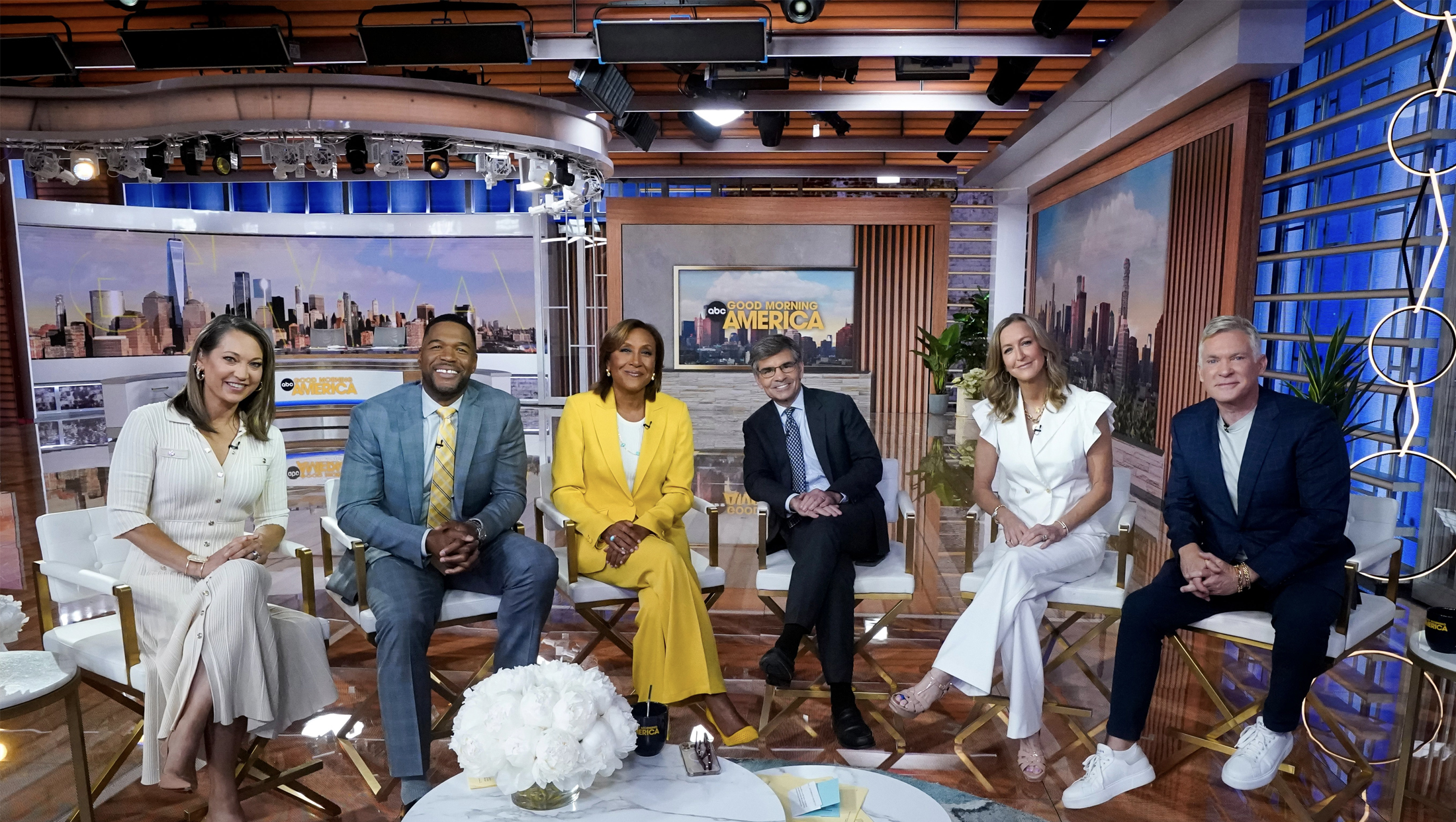
Subscribe to NCS for the latest news, project case studies and product announcements in broadcast technology, creative design and engineering delivered to your inbox.
“Good Morning America” has moved into a new home that artfully combines hard scenery, virtual set extensions and massive movable multipurpose LED units that move around on tracks, allowing the space to be reconfigured in a myriad of ways.
“I was trying to create something that took kind of all of what ‘GMA’ is now and expand on that,” Seth Easter, the production designer for ABC News who led the set design efforts, told NCS in an exclusive interview.
“GMA,” like multiple other Disney- and ABC-owned productions, made the move from its longtime home in Times Square to 7 Hudson Square, which the network and its parent are using as a consolidated base of operations in New York.
The Robert A. Iger Building includes multiple floors of broadcast studios and support spaces and is the home to shows including “The View,” “Live with Kelly and Mark” and “The Tamron Hall Show,” along with programming for ESPN and ABC News.
“GMA” has a strong core viewership base, which is one reason it was so important to keep some visual ties back to its old home — while also delivering fresh updates to take storytelling to the next level.
“Overall, the idea was to have something that was very light and airy but had a little bit of a harkening back to a loft,” explained Easter, noting that elements such as brick and wood slat accents also give the space a loft-like feel.
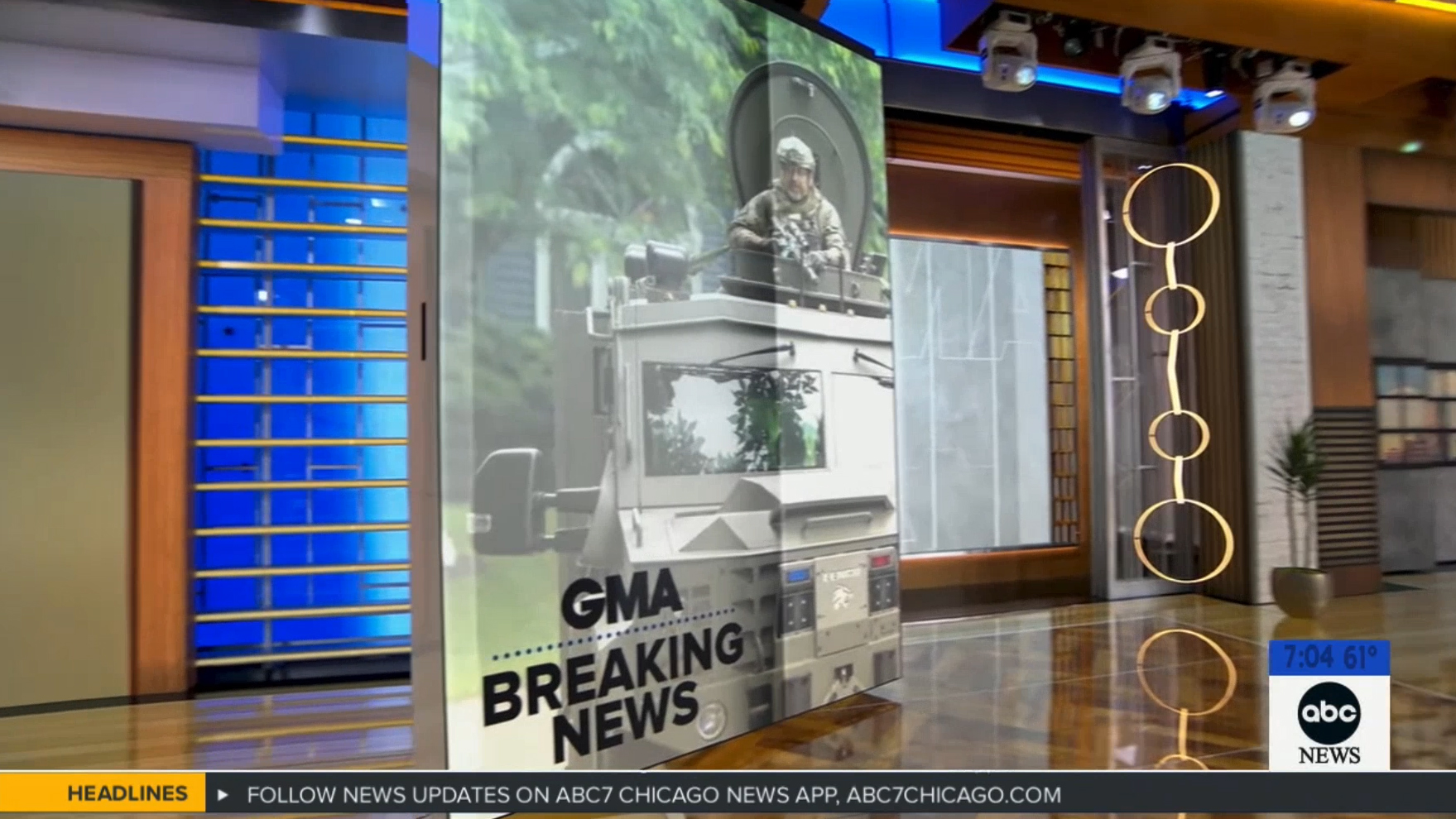
For “GMA” and its sister show “GMA3: What You Need to Know,” Studio C has been divided into two distinct areas, which are referred to as the “A side” and “B side,” both wrapped by plenty of video panels.
In fact, the set is so well stocked with LED video panels that there is a total of 65 distinct segments with over 187 million pixels, including header elements and a shiny floor created entirely from LED panels.

The set also utilizes approximately a mile and a half of LED tape, as well as six other different LED products, according to ABC.
Both spaces are interconnected but can also be divided up as needed for both logistical and visual purposes. This is accomplished with a series of double-sided LED units that can slide around the space, known as “air walls.”
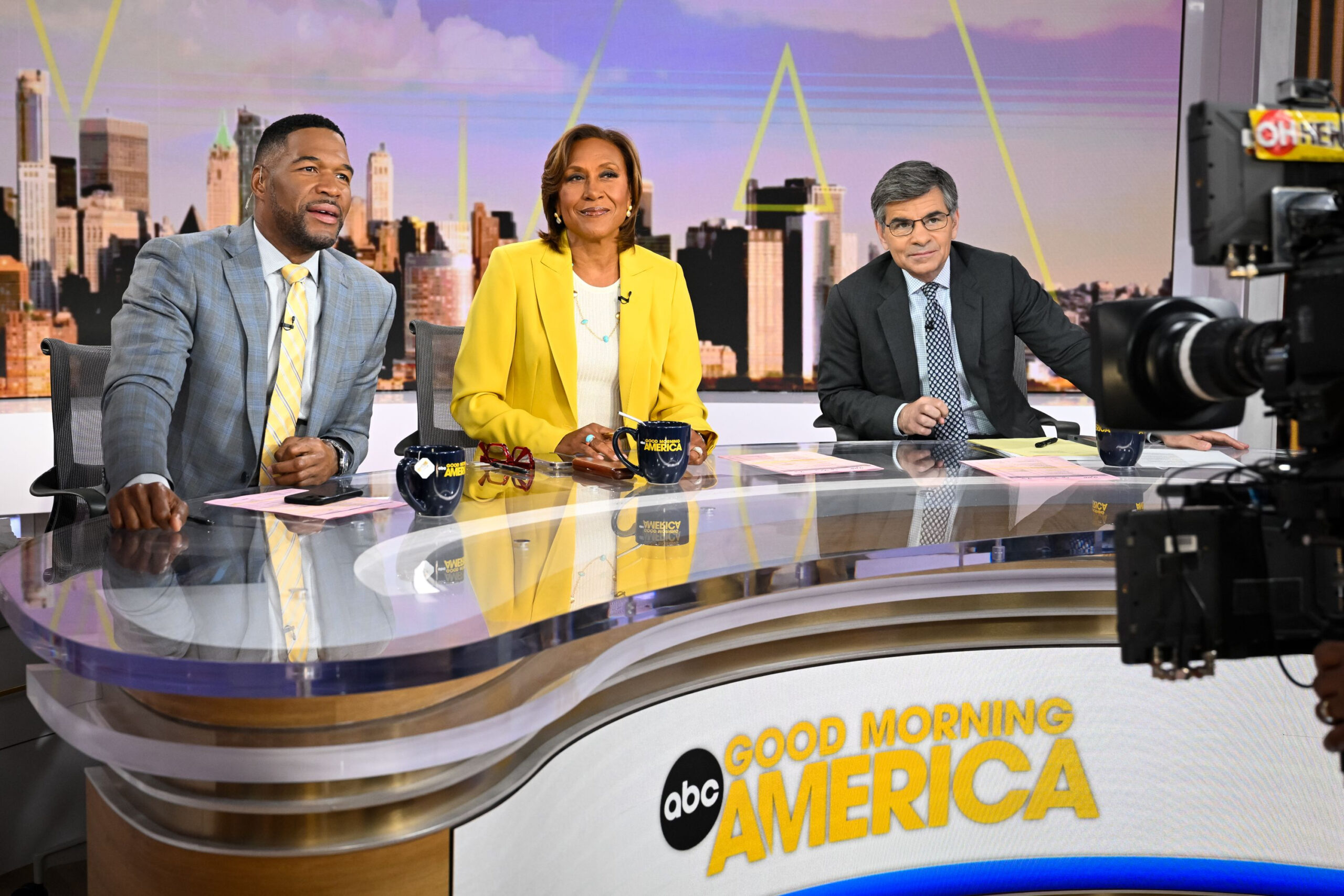
‘Good Morning America’ anchors, from left, Michael Strahan, Robin Roberts and George Stephanopoulos, on the show’s new set June 16, 2025.
The “A” portion features the main anchor desk, an organic, curved element with a low credenza behind it, backed by a curved video wall that is, in turn, installed in front of another array of video panels.
When viewing the set on air, the lines between hard scenic and extensive virtual set extensions (VSE) is purposefully blurred, with real scenery installed in strategic locations, such as the glossy white column and header element on one side of the studio and a series of slatted wood wall segments that morph into headers that run across the width of the studio on the other side.
Opposite the desk is another corner that features two LED video walls wrapped in wood-toned surrounds, including the one that sits directly under the white header, with “default” VSE options that create the look of a solid wall with gold-framed monitor on the shorter end and a large window-like opening framed out with wood slats and footer on the wider one.
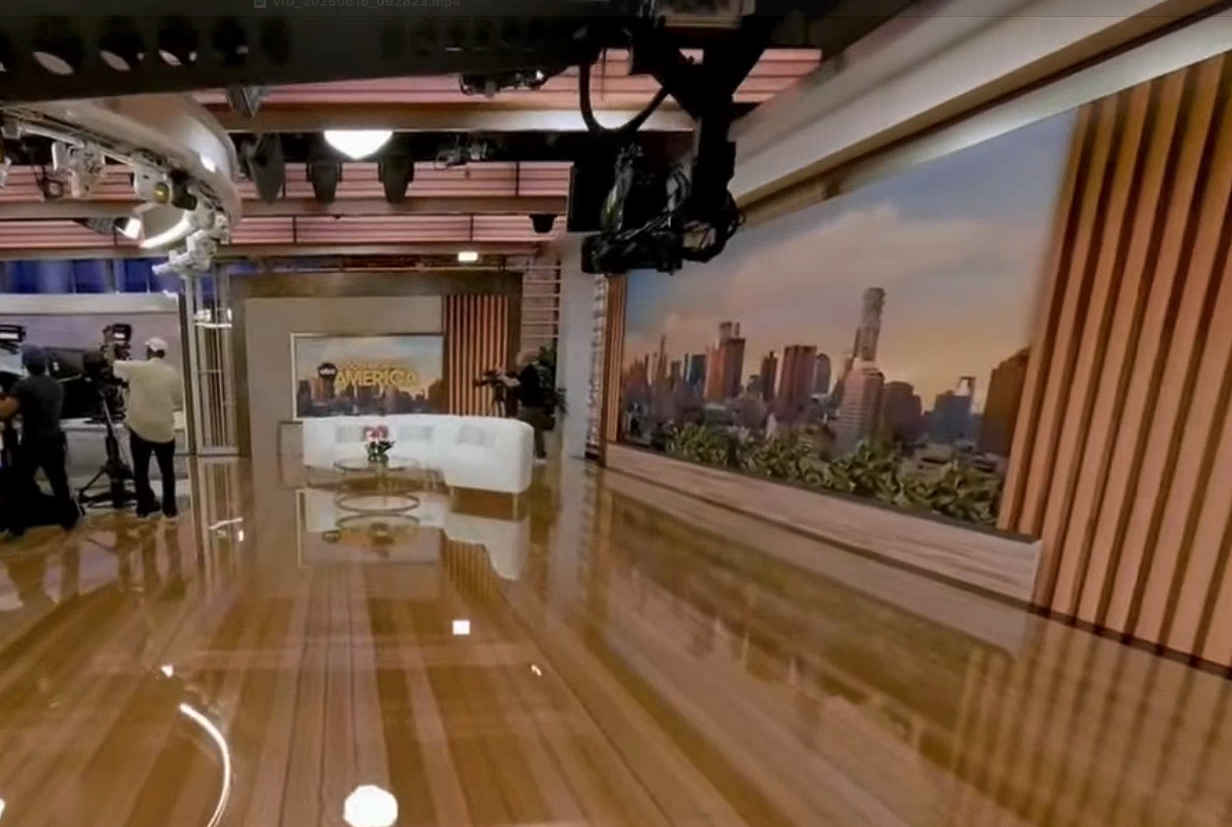
In this video of one corner of the new ‘Good Morning America’ studio, there are virtual set extensions on the two video walls in this area. All of the elements inside the wood surrounds on the far wall and right side are graphics designed to give the appearance of real scenery.
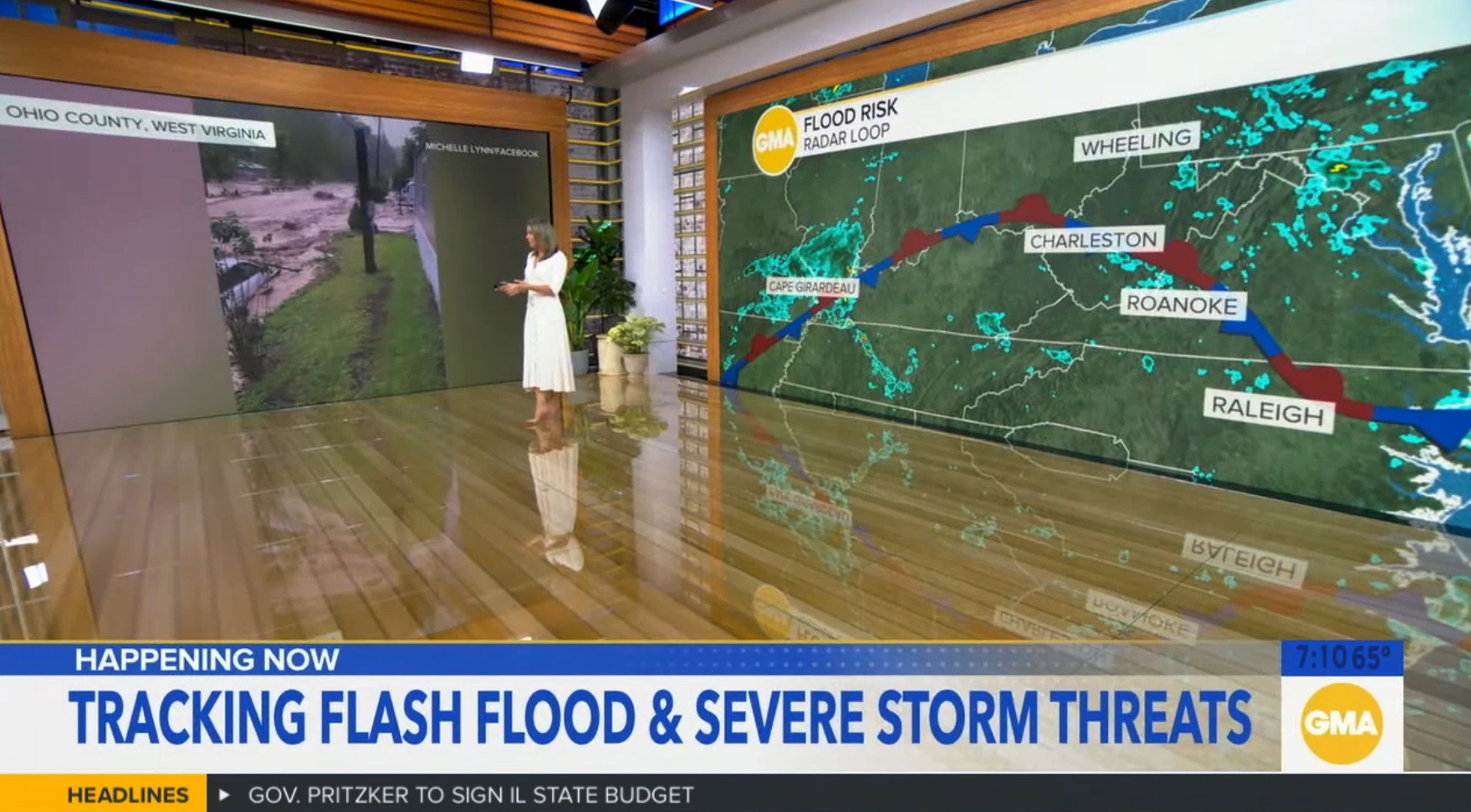
Here’s the same area during Ginger Zee’s weather segment June 16, 2025. Note how the weather video and map take up all the space inside of the wood frames.
“We can have something that looks very architectural in one part, and then if we decide to turn that into a weather map, we can do that,” Easter explained.
“The goal was basically to create a look and aesthetic, but we wanted to be able to create something that could change easily, depending on what we’re doing,” said Easter. “We’re not looking to change every day, but it definitely gives us the flexibility to adjust all these backgrounds.”

The “B” area, meanwhile, is a more open space that can be used for a variety of purposes, including demos and staging of furniture or scenic elements waiting for their time on air. It also includes an “LED cyc” that can serve as a deeper background when used in conjunction with the panels installed closer to the center of the studio, allowing the network to use “layers” of VSEs to create backgrounds with some physical depth.
A series of double-sided LED segments suspended just above the floor from ceiling tracks and include options to slide from side to side, a design strategy that also allows them to be used as vertical “towers” used to showcase topical imagery, maps and live shot feeds as anchors introduce a story, including the ability to create looks similar to these types of shots used at Time Square.
Of course, given the amount of simulated scenery used on the video walls, ABC also had to create a strong stable of VSE graphics that coordinate with hard scenery, so the network tasked digital scenery designers Brandon Bell and Amanda Kmett’Pendry with creating various looks that largely simulate the look of real scenic elements. This was then blended with various props and on set elements coordinated by art director Michael Moore.
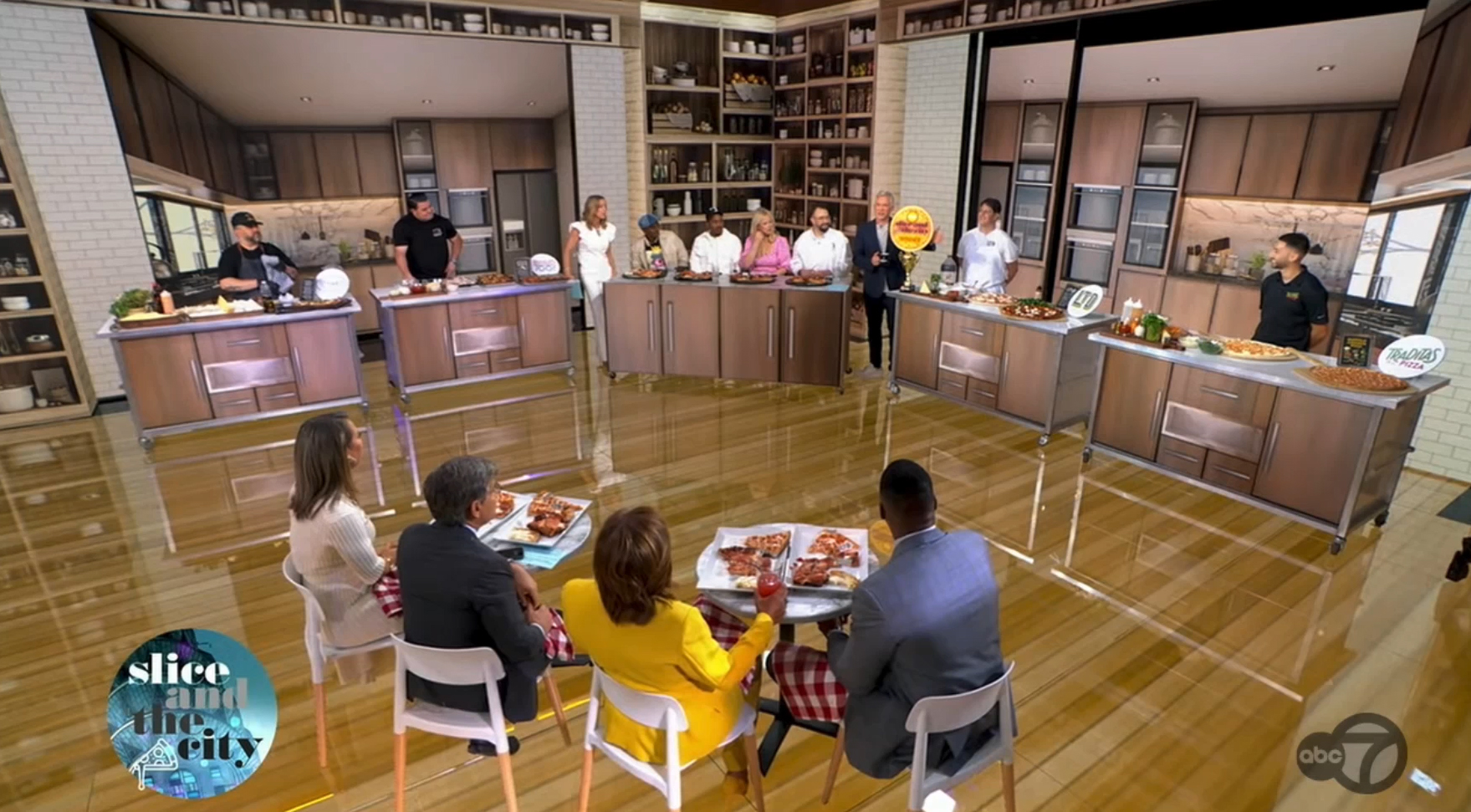
This allows “GMA” to instantly swap the look of a solid wall for a kitchen background, including the option to spread some of these graphics over multiple layers of LED.
There are even mobile demo tables fronted with LED panels that allow them to match whatever VSE or graphics are shown behind them.
Many of the default VSEs created by Bell and Pendry mirror hard scenic elements used in the space, including wood slats, exposed brick and horizontal banding.
Where these looks really shine, however, is when they are combined with depth, perspective and real furniture, such as the informal seating setups used on both “GMA” and “GMA3.” This includes a collection of real furniture strategically positioned toward the middle of the studio and blocked so that the anchor desk and the adjacent LED wall with a simulated gold-framed monitor with the show logo create the background.

Some of the video wall segments are wraparound, so the control room can feed additional imagery to the narrower sides to help supplement the 3D effects in the VSEs.
The generous use of VSEs and video walls also required an advanced deployment of Ross Video’s XPression Tessera to power the ability to reliably feed the various LED video panel surfaces with the required graphics.
All told, Easter and his team were able to create a flexible space featuring multiple choices for showcasing imagery or VSE backgrounds. Combining that with tracking systems or real scenic elements still keeps the show’s look decidedly architectural, so the space feels real, lively and inviting.
The tight coordination between the set design and build teams and digital artists was key to making the space work so harmoniously, and Easter is thrilled with the overall result.
Easter also loves how the anchor desk turned out.
“I must have designed 150 desks in my life. This is probably one of my favorite,” he said.
He also looks downward — to the LED floor that is — to spotlight another one of his favorite elements.
“The more they get used to it the more it will get used. It’s going to help us grow a lot in how we tell stories,” he said.
Project credits
For ABC News
- Production designer: Seth Easter
- Art director: Michael Moore
- Digital scenery designers: Brandon Bell and Amanda Kmett’Pendry
For The Lighting Design Group
- Lighting designer: Dennis Size
Other credits
- Scenic fabrication: Allsorts, Filmwerks, Showfab.
- AV integration: Fuse Technical Group
- LED: DetaiLED Solutions
Subscribe to NCS for the latest news, project case studies and product announcements in broadcast technology, creative design and engineering delivered to your inbox.



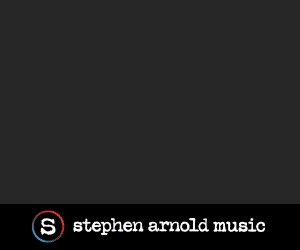


tags
7 Hudson Square, ABC, ABC News, ABC Studio C, Allsorts, Amanda Kmett’Pendry, Brandon Bell, dennis size, DetaiLED Solutions, Filmwerks, Fuse Technical Group, GMA, GMA3: What You Need to Know, Good Morning America, Hudson Square, Michael Moore, Ross XPression Tessera, Seth Easter, seth easter design, showman fabricators, The Lighting Design Group, Video Walls, virtual set extensions
categories
Heroes, Network Morning Shows, Set Design